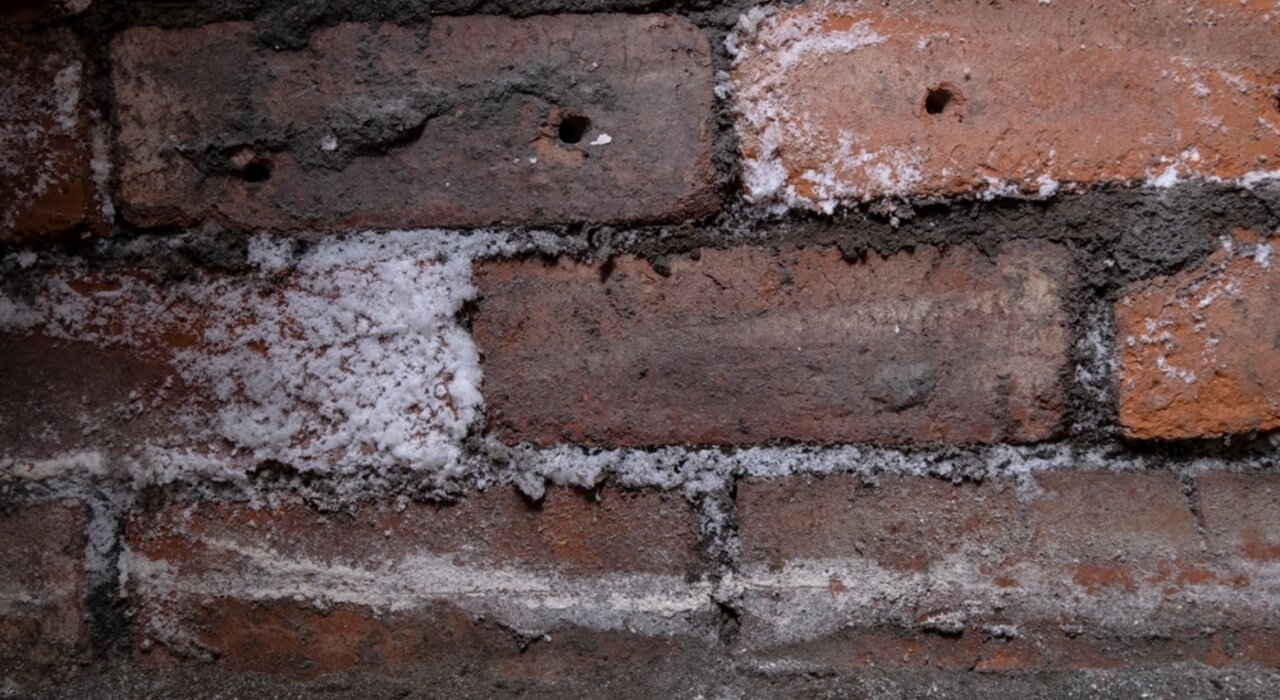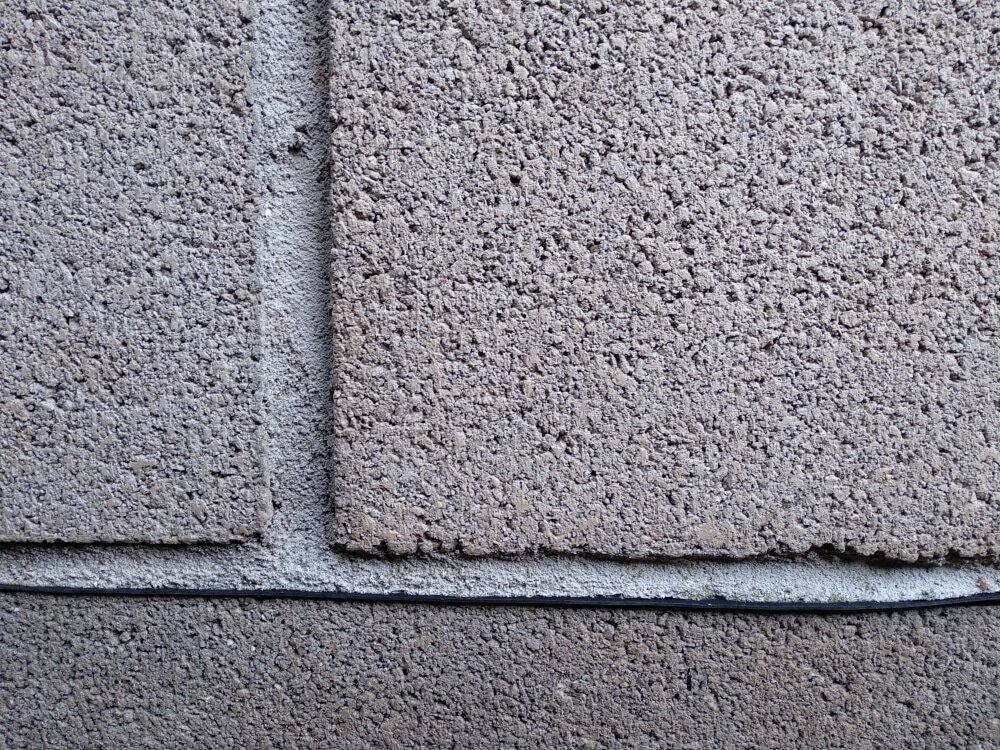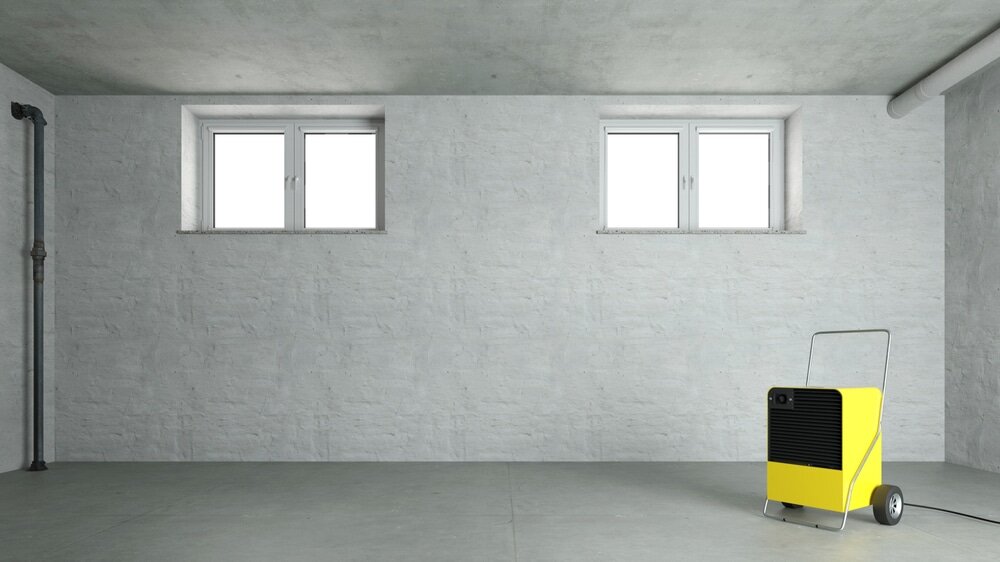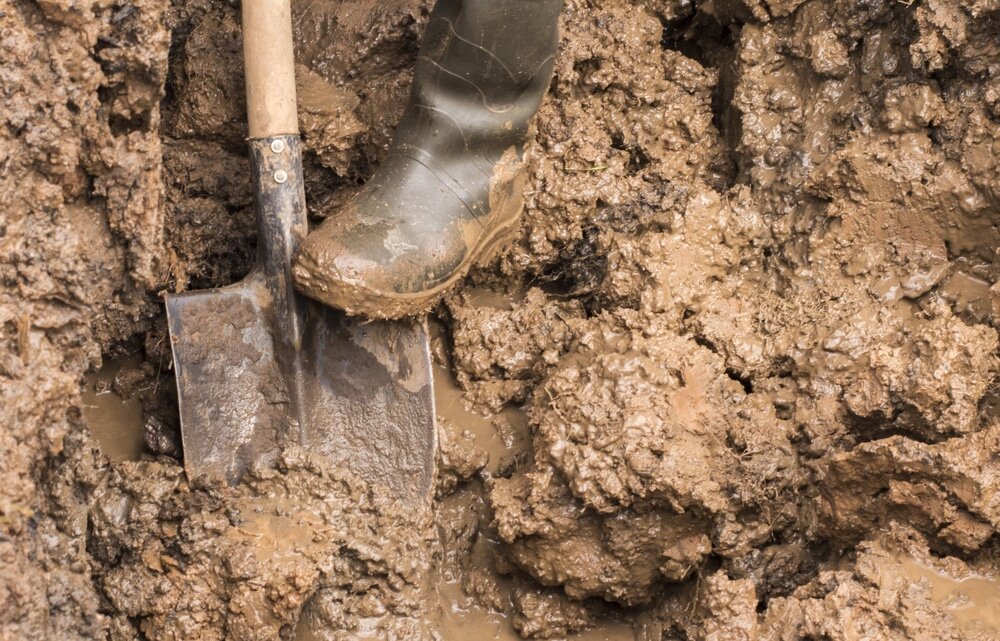
- Type of damp #1 - Rising Damp
- Recognising rising damp
- Causes of rising damp
- So what's the solution?
- Installing or repairing a Damp-Proof Course (DPC)
- Rectifying bridging issues
- Improving external drainage and waterproofing
- Ventilation and dehumidification
- Type of damp #2 - Penetrating Damp
- Recognising penetrating damp
- Causes of rising damp
- The solution?
- Installing or repairing a Damp-Proof Course (DPC)
- Rectifying internal and external bridging
- Improving building drainage
- Utilising water-repellent treatments
- Environmental and landscaping adjustments
- What about condensation?
- Causes of condensation
- Then what is the solution?
- Improving ventilation
- Maintaining consistent indoor temperatures
- Managing humidity and moisture sources
- Addressing building design and insulation
Dampness in walls is a common issue in many homes, particularly in regions with high humidity or frequent rainfall. It can not only cause structural damage but also create an unhealthy living environment. Understanding the different types of damp that can affect your walls is crucial for effective prevention and treatment. Here we delve into the three primary types of dampness: rising damp, penetrating damp, and condensation.
Type of damp #1 - Rising Damp
Rising damp is a particularly insidious form of dampness that can affect buildings, especially older structures that may not have adequate damp-proofing measures. This type of dampness occurs when groundwater moves up through the walls by capillary action. This can happen when the damp-proof course (DPC) is either absent, bridged, or has deteriorated over time.
Recognising rising damp
Rising damp is a unique and troublesome issue, presenting specific characteristics that help in its identification and understanding of its impact on buildings. Here's a more detailed look at these characteristics:
- Tide marks and staining: Rising damp often leaves a visible 'tide mark' on the walls. This is due to the evaporation of moisture, which leaves behind salts drawn up from the ground. These marks are typically yellowish or brownish and can be found up to one metre above the skirting boards.
- Salt deposits: The water drawn up from the ground contains salts, which are deposited on the walls as the water evaporates. These salt deposits can appear as white, fluffy deposits and are often a telltale sign of rising damp.
- Deterioration of wall coverings: Wallpaper and paints tend to peel, blister, or bubble due to the moisture and salts. Over time, this can lead to significant aesthetic and structural damage to the wall coverings.
- Damage to plaster and masonry: Rising damp can cause plaster to crumble and deteriorate, especially at the lower sections of walls. Similarly, masonry may also show signs of decay due to prolonged exposure to moisture.
- Musty smell: A persistent musty or damp smell is a common indicator of rising damp. This odour results from the increased humidity and the presence of mould and mildew within the affected area.
- Mould growth: High moisture levels create ideal conditions for mould growth, which often appear as black or dark green patches on the walls. Mould not only damages the wall surface but can also pose health risks, particularly to individuals with respiratory issues.
- Rotting wood: Wooden elements like skirting boards, floorboards, and timber joists can start to rot due to constant exposure to moisture. This can lead to structural weaknesses and further deterioration.
- Cold and damp feel: Walls affected by rising damp often feel cold and damp to the touch, indicating the presence of moisture within the structure.
- Efflorescence: A powdery or crystalline deposit on the surface of the walls, known as efflorescence, can occur. This is another sign of the salts being brought up by the moisture.
- Wallpaper lifting and staining: Wallpaper may lift from the wall, particularly along the seams, and can also show staining from the salts and moisture.
- Discolouration of paint and plaster: Paint and plaster may discolour, showing patches of damp-related stains, often darker than the surrounding area.
Causes of rising damp
One of the primary causes of rising damp is the absence of a damp-proof course in older buildings. Originally, many older structures were built without a DPC, leaving them vulnerable to moisture seeping up from the ground. In some cases, even when a DPC is present, it may fail over time. This failure could be due to deterioration of the material used (like slate, bitumen, or plastic), or due to poor installation. Modern buildings use more robust materials for DPC, but even these can fail if they are damaged during construction or as a result of building settlement. Another common cause is the bridging of the DPC. This can happen when the external ground level is raised above the DPC. Internal factors can also cause bridging, such as installing new floors that are higher than the original DPC level. When the DPC is bridged, it allows moisture to bypass the barrier, leading to rising damp. Many construction materials, like bricks and mortar, are porous and can absorb water. When there is moisture in the ground, these materials can draw up the water through capillary action, much like a sponge absorbs water. The smaller the pores, the higher the water can rise. This is why rising damp is typically more pronounced in older buildings. The presence of high water tables or subterranean water sources near a building can exacerbate the problem of rising damp. Poor drainage around the building foundation also contributes significantly, as it allows water to accumulate near the walls. Environmental conditions such as heavy or prolonged rainfall, flooding, and high humidity can increase the level of ground moisture. In areas with such climatic conditions, the risk of rising damp is higher, particularly if other protective measures are not adequately in place.
So what's the solution?
Installing or repairing a Damp-Proof Course (DPC)
One of the most effective ways to prevent rising damp is by installing a robust DPC. In older buildings where a DPC is absent or has failed, it's crucial to install a new one. This often involves a process called chemical injection, where a water-repellent chemical is injected into the walls at the correct level to create a barrier against moisture. In some cases, physical DPCs made of materials like plastic or slate can be inserted into the walls.
[caption id="attachment_66682" align="aligncenter" width="1000"] Damp proof membrane on blockwork[/caption]
Damp proof membrane on blockwork[/caption]
Rectifying bridging issues
It's essential to identify and rectify any bridging of the DPC. This involves lowering the external ground level to below the DPC or adjusting internal floor levels. Ensuring that the DPC remains unbridged is key to its effectiveness in preventing rising damp.
Improving external drainage and waterproofing
Proper drainage around the building helps keep moisture away from the foundations. This can include installing or repairing gutters and downpipes, ensuring proper slope away from the building for water runoff, and waterproofing the exterior walls. These measures help reduce the amount of water that can seep into the ground and potentially rise through capillary action.
Ventilation and dehumidification
Good ventilation helps to reduce the humidity levels within a building, making the interior less conducive to damp-related issues. In areas with high moisture, using dehumidifiers can help maintain a drier environment, reducing the risk of internal condensation, which can exacerbate rising damp problems.

Type of damp #2 - Penetrating Damp
Penetrating damp happens when water infiltrates the walls from the outside, often due to structural problems. Common causes include faulty roofing, leaking pipes, or cracks in the walls. Unlike rising damp, penetrating damp can occur at any level of the building and is often localised to the area of water entry.
Recognising penetrating damp
- Damp patches on walls and ceilings: One of the most obvious signs of penetrating damp is the appearance of damp patches on walls and ceilings. These patches often have a distinct outline and are usually darker than the surrounding area. Unlike rising damp, which typically occurs at the base of walls, penetrating damp can appear at any height and often corresponds to the location of the external defect allowing water ingress.
- Wet and rotting window frames or doors: Wooden elements of a building, such as window frames and doors, are particularly susceptible to water damage. Prolonged exposure to moisture can lead to wet rot, where the wood becomes soft, spongy, and discoloured. In extreme cases, the timber may even begin to crumble.
- Damage to internal finishes: Interior decorations and finishes are often the first casualties of penetrating damp. Wallpaper may start to peel away from the wall, paint can bubble and flake off, and plaster may become soft and crumbly. These damages are usually concentrated around the damp area and can worsen over time if the underlying issue is not addressed.
- Mould growth and musty smells: This can manifest as black, green, or white patches on walls, ceilings, or around windows. Along with visible mould, a musty, damp smell is often present, indicating an ongoing moisture problem.
- Staining and efflorescence: Water seeping through walls can leave behind mineral deposits, leading to staining and efflorescence (a white, powdery substance) on internal surfaces. These marks are often more prominent after the water has dried and can be difficult to remove.
- Cold and clammy surfaces: Affected areas often feel cold and clammy to the touch. This is because the moisture in the walls conducts heat away more effectively than dry materials, leading to a noticeable difference in surface temperature.
Causes of rising damp
One of the primary causes of rising damp is the lack of an effective damp-proof course. Older buildings, constructed before damp-proofing became standard, are particularly vulnerable. In buildings where a DPC is present, it may fail due to age or damage. The DPC is a crucial barrier that prevents moisture from the ground from being drawn up into the walls. When it is non-existent, defective, or bridged, moisture finds an easy path upwards.
The inherent properties of building materials play a significant role in rising damp. Materials like brick, stone, and mortar are porous and can draw water upwards through tiny capillary pores. This action is akin to the way a sponge absorbs water. The smaller the pores, the higher the water can potentially rise, exacerbating the issue in certain types of masonry.
Climatic conditions significantly influence the occurrence of rising damp. Regions with high rainfall, persistent humidity, or high water tables are more susceptible. These environmental factors contribute to higher levels of ground moisture, which then finds its way into the building fabric.
The type of soil and its moisture content around a building also plays a part. Soil that retains water, such as clay, can exacerbate the problem, especially if there is inadequate drainage around the building's foundations. This leads to a constant supply of moisture being available to be drawn up into the walls.

The solution?
Installing or repairing a Damp-Proof Course (DPC)
The most direct approach to combating rising damp is the installation or repair of a damp-proof course. This barrier, usually made from water-resistant materials like plastic, slate, or a specially formulated chemical compound, is placed horizontally in wall structures to prevent moisture from rising. In cases where the existing DPC is damaged or ineffective, repairing or replacing it is crucial. Modern methods often involve the injection of a silicone-based chemical into the walls, which repels water and forms a protective barrier.
Rectifying internal and external bridging
Ensuring that the DPC is not bridged is essential. This involves checking that external ground levels are lower than the DPC and that internal floor levels or built-in structures do not compromise them. If bridging is found, necessary adjustments should be made, such as reducing soil levels or modifying internal layouts.
Improving building drainage
Adequate drainage around the building is vital in managing ground moisture levels. Installing proper drainage systems, repairing existing ones, and ensuring gutters and downpipes are clear and functional can significantly reduce the amount of moisture in the soil around the building's foundations.
Utilising water-repellent treatments
In some cases, applying water-repellent treatments to external walls can provide an additional layer of protection against moisture. These treatments allow the walls to 'breathe' while preventing water from penetrating the surface.
Environmental and landscaping adjustments
In areas prone to high moisture levels or where the water table is high, landscaping adjustments can help. Grading the land away from the building and incorporating features that direct water away from the foundation can be effective.
What about condensation?
Condensation is a common issue in many homes and buildings, particularly in colder months. It occurs when moist air comes into contact with a cold surface, causing the water vapour in the air to turn into liquid. Recognising the signs of condensation is essential for timely intervention and to prevent potential damage and health risks.
- Water droplets on windows and walls: The most visible sign of condensation is the presence of water droplets on the inside of windows or on walls. This is particularly noticeable during cold weather when the difference in temperature between the inside and outside of the building is significant.
- Peeling wallpaper or blistering paint: Excessive moisture from condensation can cause wallpaper to peel away from the wall. Similarly, paint may start to blister or bubble up, indicating that there is too much moisture in the room.
- Mould growth: Condensation creates a damp environment which is ideal for mould growth. Black or dark green mould patches may appear, especially in corners, on or around windows, and behind furniture where air circulation is poor.
- Musty odours: A musty smell is often a telltale sign of condensation problems.
- Damp and clammy surfaces: Surfaces, particularly those that are non-absorbent like glass and metal, may feel damp or clammy to the touch as a result of condensation.
- Staining and damage to fabrics and furnishings: Condensation can cause staining on curtains, blinds, and other fabrics. Over time, it can also lead to damage to furniture and other room furnishings.
- Rotting wood: In severe cases, the persistent dampness caused by condensation can lead to wood rot.
Causes of condensation
Everyday activities like cooking, bathing, drying clothes indoors, and even breathing contribute to the moisture content in the air. In households with many occupants or in buildings where such activities are frequent, the amount of moisture generated can be significant. When this moist air comes into contact with cooler surfaces, it condenses into water droplets. Proper ventilation is crucial in controlling indoor humidity levels. Modern buildings, in the pursuit of energy efficiency, are often well-sealed, which can restrict airflow and trap moist air inside. Older buildings, too, can suffer from inadequate ventilation if windows are often kept closed or if extractor fans and vents are blocked or not used effectively. Condensation is often more pronounced during colder months when there's a larger temperature differential between the inside and outside of a building. This is because cold surfaces in the building provide a surface for the warm, moist air inside to condense upon. Poor thermal insulation exacerbates this problem, as it allows more surfaces within the building to fall below the dew point temperature. Architectural features or maintenance issues that lead to cold spots on walls or around windows can also contribute to condensation. This includes thermal bridging, where certain parts of the building structure conduct heat more effectively than others, and issues like damaged seals around windows or inadequate insulation.
Then what is the solution?
Improving ventilation
One of the most effective ways to tackle condensation is by enhancing ventilation. This can be achieved through simple actions like opening windows regularly, especially in high-moisture areas like kitchens and bathrooms. Installing extractor fans in these rooms can also significantly help in removing moist air directly from the outside. For a more comprehensive solution, especially in buildings with chronic condensation issues, installing a ventilation system, such as positive input ventilation or mechanical ventilation with heat recovery, can provide continuous airflow and improve indoor air quality.
Maintaining consistent indoor temperatures
Keeping a consistent temperature in the home can help prevent surfaces from getting too cold. This doesn't necessarily mean keeping the heating on all the time, but rather avoiding sudden temperature drops. Adequate insulation plays a vital role here, as it helps maintain a more consistent temperature throughout the building. It also reduces the number of cold surfaces where condensation can occur.
Managing humidity and moisture sources
Reducing the amount of moisture produced is key. This can involve simple lifestyle changes, such as covering pots while cooking, drying clothes outdoors when possible, and closing doors to prevent moisture from spreading to colder parts of the house. Using dehumidifiers can also be effective in areas with high humidity levels.
Addressing building design and insulation
Ensuring that the building is properly insulated and free from thermal bridging can prevent cold spots. In addition, checking and repairing any faulty seals around windows and doors can help keep indoor moisture levels in check.
